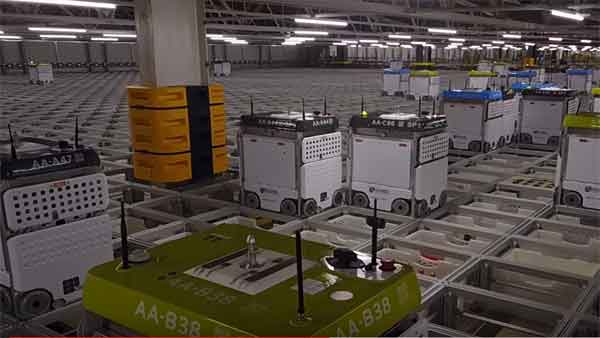Two weeks ago, CSCMP and partner Kearney released the State of Logistics Report 2020, as always with a wealth of data on all things logistics, including or course the warehouse and distribution sector. (See State of the Logistics Union 2020.)
It's no secret that demand for warehouse space remains strong, driven by many factors, notably efulfillment, which requires in many cases additional space closer to the end customer, and more square feet of space per unit shipped - as much as three times the floor space, according to analysis by Prologis. (See eCommerce Continues to Drive Heavy Demand for Warehouse Space, as Coronavirus has Accelerated Pace of Online Share Gains.)
Supply Chain Digest Says... |
|
|
Indeed, vacancy rates remain at historic lows, on average just 4.8% across the US in 2019, the same level as in 2018, according to data contained in the State of Logistics Report as first compiled by real estate firm Cushman & Wakefield.
And warehouse developers are continuing to make investments. The report says that in Q4 2019 alone 100 million square feet of warehouse space came to market, an all-time quarterly record. But demand continues to keep up with deliveries.
Some of that demand is from existing shippers that like the features of the new DCs, which are taller, more energy efficient, and provide other logistics amenities not found in warehouses built years ago.
That said, the report notes that "With vacancy rates so low, tenants often lease any space they can find."
The report says that the virus crisis has increased demand for warehouse space in some sectors, such as food, while lowering demand in others. But in total, there will likely be only a small increase in availability levels in 2020, the report says, while the now even faster growth of ecommerce and the growing willingness of companies to hold more inventory should keep demand strong for many years.
For example, the report notes that if ecommerce grows at the 20% rate it has seen lately rather than the previously projected 14% growth, it will create deman for an additional 400 million square feet of space over the next five years - the equivalent of 400 one million square foot DCs.
Meanwhile, Cushman & Wakefield estimates that if companies on average hold just 5% more inventory going forward, then that would require some 700 million to 1 billion square feet of warehouse space across the US.
Retailers are taking different paths to efulfillment, the report notes. Some are opening smaller warehouses in urban areas. Target has taken a store focus, with 80% of its on-line order fulfilled by stores currently – though that might hit a ceiling at some point, it would seem.
(See More Below)
|
CATEGORY SPONSOR: SOFTEON |
|
|
| |
|
|
Meanwhile, Walmart, Albertsons, Meijer and others are often using dark stores – shuttered retail sites they still have leases on - to perform efulfillment.
Here Comes the Automation
With continued real challenges with labor in most markets, and high costs for efulfillment, many shippers are looking at various levels of automation to change the current dynamic, the report notes.
 The report says many shippers like new-age cost models from many mobile robot vendors such as robotics-as-a-service, where users pay a subscription fee for using the robots in a warehouse, rather than buy the robots up front. Other robot makers are offering a "pay per pick" plan. The report says many shippers like new-age cost models from many mobile robot vendors such as robotics-as-a-service, where users pay a subscription fee for using the robots in a warehouse, rather than buy the robots up front. Other robot makers are offering a "pay per pick" plan.
The report notes automation is coming to the grocery sector, with Kroger signing a deal with UK on-line grocer and robotic picking vendor Ocado to roll out more than 20 highly automated DCs for ecommerce fulfillment.
In store, grocers are adopting so-called micro-fulfillment systems, using automated goods-to-person technology that involves open shuttles traversing a grid like structure to deliver very high pick rates per minute – but at a cost of a hefty $3-4 million each.
The report says there is increased interest in using drones inside distribution centers to do inventory counting – though it says initial deployment costs are high for these systems.
The report also notes the growth in a software category called Warehouse Execution Systems (WES), which work with or on top of the much more familiar Warehouse Management Systems. The report says WES "can offer real-time visibility to throughput and bottlenecks, direct management of picking sub-systems, and run simulation to plan and allocate resources, among other capabilities."
The bottom line: the State of Logistics Report sees continued strong growth in demand for distribution center space for some time – and a growing percentage of those facilities full of automation.
Any reaction to this discussion of trends in waehousing? Let us know your thoughts at the Feedback section below.
|